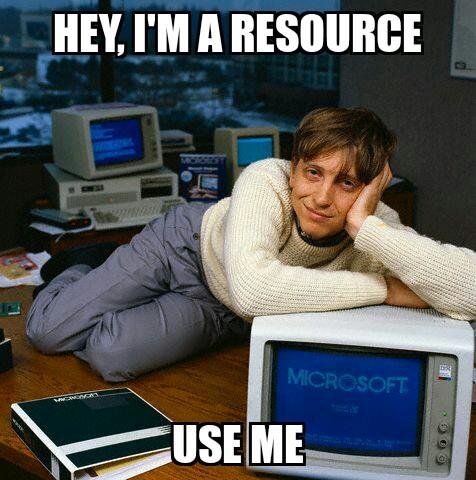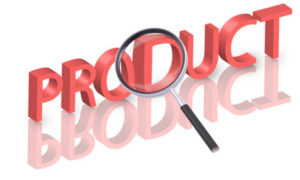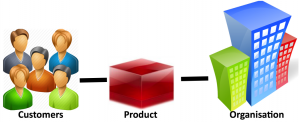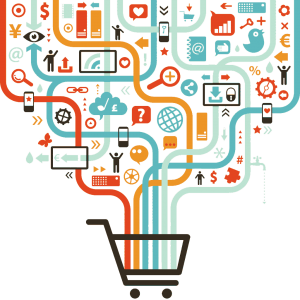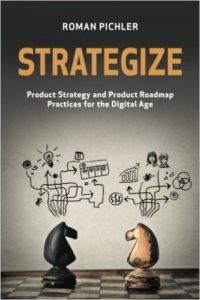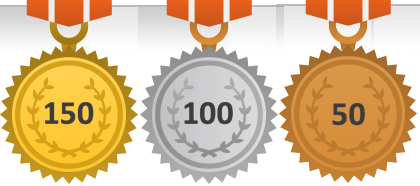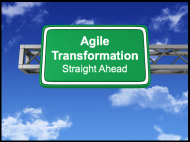 Overview
Overview
Let me start by stating that Agile transformation is hard. There are many different schools of thought on creating organisational change and in this post I wanted to take you through some of the options from a conceptual level.
In this era of unprecedented change, organisations need to rapidly change and adapt to market conditions and customer’s needs. Working in a traditional company model is palliative care with organisations that cannot change replaced by those that are smaller and more flexible. We should constantly be learning more about our customers and market, and develop our skills and capability to meet their needs.
I could start by discussing vision, big hairy audacious goals, change management, adoption curves, servant leadership, ADKAR model, Satir change process, Kotter’s eight-steps, Bridges’ transition model, Switch framework, cultural change, Agile mindsets, product management, feature teams, tool-led initiatives and process-led change but let us instead look at different Agile transformation models in order of difficulty.
Osmosis
 Over time there is a gradual and unconscious assimilation of ideas and knowledge from the wider industry. Companies that learn and change continue to operate, others do not.
Over time there is a gradual and unconscious assimilation of ideas and knowledge from the wider industry. Companies that learn and change continue to operate, others do not.
Advantages: No effort is required and change, if it happens, is natural and led by interested individuals. If people are unable to initiate change then they will leave – “you have to change your company – or change your company” (Martin Fowler).
Disadvantages: High risk model, business as usual and risk aversion generally win over disruptive change. Also it takes too much time and there is no consistent approach or understanding.
Pilot & Grow
 Initially form an Agile team and demonstrate success. Publicise this success (formally or via word of mouth) to develop more Agile teams (duplicate, split or seed). Trust on their continued success to grow an Agile culture progressively throughout the company.
Initially form an Agile team and demonstrate success. Publicise this success (formally or via word of mouth) to develop more Agile teams (duplicate, split or seed). Trust on their continued success to grow an Agile culture progressively throughout the company.
Advantages: Organic growth based on team success is easier to embed. Success breeds success.
Disadvantages: This approach takes time to prove success and spread Agile. Any setbacks reflect badly upon the entire transformation and potentially impede it. Additionally non-Agile teams and partners will create difficult impediments to progress.
Portfolio
 Convert one portfolio at a time whilst collaborating closely with stakeholders and all those involved. Portfolio change is typically performed after the pilot stage has already proven the domain specific model. Provide portfolio-wide transformation effort for a fixed period in order to make the change happen and protect the portfolio during the transition.
Convert one portfolio at a time whilst collaborating closely with stakeholders and all those involved. Portfolio change is typically performed after the pilot stage has already proven the domain specific model. Provide portfolio-wide transformation effort for a fixed period in order to make the change happen and protect the portfolio during the transition.
Advantages: Very clear vision for each incremental transformation effort, divide and conquer across the company and internal competition between portfolios can be a positive effect.
Disadvantages: Messaging must be very clear to give an overall roadmap with checkpoints and to avoid any ‘them-and –us’ attitudes emerging.
Maturity Model
 A more refined and aspirational approach where proven practice is clearly defined and a maturity model is in place for teams to self-certify themselves against. Training, coaching and mentoring are all available on a pull basis and communities of practice reinforce and anchor change.
A more refined and aspirational approach where proven practice is clearly defined and a maturity model is in place for teams to self-certify themselves against. Training, coaching and mentoring are all available on a pull basis and communities of practice reinforce and anchor change.
Advantages: A detailed and progressive path to improvement is given and support is available to make it happen. The pull nature ensures change is self-organised and the certification used provides good metrics upon the change.
Disadvantages: Messaging must be very clear to communicate the overall roadmap and progress made.
Done/Not Done
 This model is similar to the Portfolio model but differs by moving projects/teams across individually and having a hard-line viewpoint of the converted (done – Agile) and the unconverted (not done – traditional).
This model is similar to the Portfolio model but differs by moving projects/teams across individually and having a hard-line viewpoint of the converted (done – Agile) and the unconverted (not done – traditional).
Advantages: Easier from a transformational point with training and coaching applied to each small area prior to moving on. Work is made progressively across the company until everyone is Done.
Disadvantages: Divisive model to push change through an organisation, mindset and process regression is likely and will disrupt the transformation.
Horizontal Slice
 A common incremental approach to Agile transformation where each department is transitioned in turn. For example, the software department changes, followed by the test department, systems department, project management, portfolio management etc.
A common incremental approach to Agile transformation where each department is transitioned in turn. For example, the software department changes, followed by the test department, systems department, project management, portfolio management etc.
Advantages: Easier to implement with only one focused department effort at a time. Leveraging of departmental success to drive change through the next department. The simpler technology change is performed first followed by later business inclusion.
Disadvantages: Fails to realise benefits of Agile for a considerable time with local sub-optimisation. Also a lack of business involvement and a lack of drive for end-to-end customer value can hamper overall effectiveness.
Vertical Slice
 Many view Agile transformation as running too slowly within organisations due to many existing impediments including the frozen middle, power structures, FUD (fear, uncertainty and doubt), risk aversion, business as usual etc. In this model a new organisation is created with an entire slice of the business from the top stakeholders downwards including all departments required. This Agile organisation works independently; the legacy part of the organisation is then gradually transferred across. Any parts of the organisation (products, process and people) that are not capable of working in an Agile way remain in the original organisation as it is run down and closed. Companies often use a new building or site to do this process cleanly.
Many view Agile transformation as running too slowly within organisations due to many existing impediments including the frozen middle, power structures, FUD (fear, uncertainty and doubt), risk aversion, business as usual etc. In this model a new organisation is created with an entire slice of the business from the top stakeholders downwards including all departments required. This Agile organisation works independently; the legacy part of the organisation is then gradually transferred across. Any parts of the organisation (products, process and people) that are not capable of working in an Agile way remain in the original organisation as it is run down and closed. Companies often use a new building or site to do this process cleanly.
Advantages: A clear line in the sand is drawn with a distinction between what is acceptable and what is not. The culture and mindset of the new organisation starts “right”. The usual impediments to organisational change are all removed in one big step with a new modern company created. This is hard-core transformation with the view – “if you can’t change your people, change your people” (Dan Ariens).
Disadvantages: Massively disruptive with a clear impact on the entire company (but fun to do!).
Big Bang
 Treat the organisation as a single entity, provide all required training and then provide a date for making a single clean break to a new way of working. Provide coaching and mentoring to reinforce the process and provide feedback opportunities via ‘inspect and adapt’ cycles to ensure that the change is embedded. Also use communities of interest/practice to normalise spikes.
Treat the organisation as a single entity, provide all required training and then provide a date for making a single clean break to a new way of working. Provide coaching and mentoring to reinforce the process and provide feedback opportunities via ‘inspect and adapt’ cycles to ensure that the change is embedded. Also use communities of interest/practice to normalise spikes.
Advantages: This is a simple model with clear goals and acceptance criteria. Consultancies often favour this model as they can bring in a large number of trainers and coaches (£££) to make a rapid transformation in process and practices.
Disadvantages: It is difficult to anchor change in a short period, business is disrupted and people can push back against the rate of change causing it to relapse. Creating a positive value increment using this method also takes time as the disruptive new process needs to bed in across the entire company simultaneously.
Conclusions
“All models are wrong but some are useful” (George box). The models represented above are all high-level simplifications of the difficulties and intricacies of dealing with real organisational change. Hopefully they provide insight into the variety of methods and options available.
Traditionally guerrilla Agile was implemented by teams to produce success prior to informing management of the method used. This changed to gaining initial stakeholder buy-in to use Agile, with financial and transparency advantages. ‘Middle-out’ adoption followed this to prevent fear of change from middle management causing regression or cancellation of change programs. This provided good results by combining stakeholder buy-in with team-led transformation. Lately there has been a move to tool or practice led transformation, for example implementing DevOps in its entirety and relying on it to bring in all of the required change. Additionally scaled approaches and push-backs to the ‘heart of Agile’ are still competing for space.
Piloting Agile teams is still useful to determine tailoring and show domain-specific success prior to wider transformation efforts. Following this, portfolio level change enables large groups to be transformed removing the frequent dependency impediments experienced by the pilot teams.
 Vertically slicing the organisation by creating new sites, buildings or divisions and running them in an Agile way is a brave and successful method if you can gain sufficient buy-in and short-term protection from your stakeholders.
Vertically slicing the organisation by creating new sites, buildings or divisions and running them in an Agile way is a brave and successful method if you can gain sufficient buy-in and short-term protection from your stakeholders.
Big bang change is always disruptive, high-risk and burns massive amounts of energy, money and change capital. Without the change in mindset and culture there is always the likelihood of people reverting to more traditional forms when under pressure.
The model that you use will depend upon your company culture, stakeholder buy-in, desire for change, time and budget available plus many other factors. Good luck and please let me know how you progress.
#ScrumRonin
 I am really sorry to have to say it but words do matter, they change the context of conversations and impact on culture. Imagine overhearing your manager speaking loudly on the phone “Yeah John, I can allocate some resource for the weekend to fix your problems” – are you happy being that resource?
I am really sorry to have to say it but words do matter, they change the context of conversations and impact on culture. Imagine overhearing your manager speaking loudly on the phone “Yeah John, I can allocate some resource for the weekend to fix your problems” – are you happy being that resource?